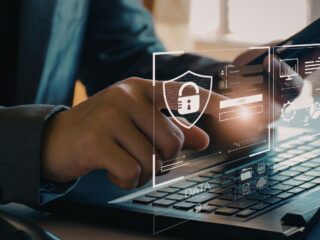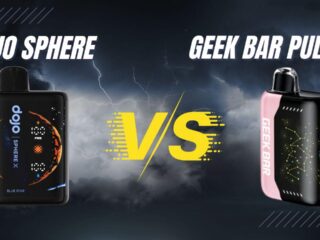In the modern business environment, which is characterized by a rapid lifestyle, all organizations desire processes to run smoothly, particularly in the purchase of goods, vendor management, and payments. However, it is really a challenge to do everything manually. Invvoices that are lost, approvals that are delayed, or even missed cycles of payment can cause undue havoc.
That is where Procure to Pay (P2P) software comes in. It closes the divide between procurement and finance, enabling businesses to monitor all the processes, purchasing goods, paying the supplier, all under a single system. P2P software makes sure that all of your procurement procedures are efficient and clear, whether you are a developing company or a huge enterprise.
Identifying Procure to Pay Software
The Procure to Pay software is also referred to as the P2P software and is a digital procurement-management software that is meant to regulate the entire process of purchasing for an enterprise. It begins with the process of raising a purchase request and culminates in final payment to suppliers.
Imagine it as a smart system linking your procurement, inventory, and finance departments, and making sure that everyone is operating on the same page. It assists companies in automating routine operations, minimizing errors in manuals, and having closer management of expenditure.
As an example, in case an employee places an order for office supplies, the P2P system will form a purchase requisition, obtain approval, change it into a purchase order, accept goods, match invoices, and eventually make a payment. Nothing is juggled, no emails, spreadsheets, or paper trail; everything occurs in one flow.
The Businesses require a Procure to Pay System
With time being money, companies can not afford to lose time either in procuring or paying. That is why it is necessary to have an effective Procure to Pay system:
1. Openness throughout the Process
All the purchases, approvals, and payments are documented. This gives the business full visibility on who ordered what, who the order came from, and at what price.
2. Error-Free Transactions
Manual operations are associated with such errors as payments being made twice or invoices being missed. These tasks are automated by means of a P2P system, thus making it accurate each time.
3. Quickest Approval and Payments
Digital workflows imply that managers only need a few clicks to approve purchase requests or invoices, and provide faster order processing and satisfied suppliers.
4. Better Vendor Management
Detailed information on vendors, along with their prices, reliability, and payment records, is stored in the system that assists companies in having a better relationship with their suppliers.
5. Cost Control and Savings
Through monitoring spending patterns and budgets, businesses are able to recognize opportunities to save costs as well as negotiate better deals with the suppliers
6. Audit Readiness and Compliance
All transactions are now digitized, and therefore, the company can meet internal policies and external regulations more easily.
A Simple Guide to the Procure to Pay Cycle
In order to know the true worth of P2P software, we will consider the major phases of the software:
1. Purchase Requisition:
Employees make a request in case of a need for goods or services.
2. Purchase Order Creation:
Upon approvals, the system automatically translates the request into a purchase order (PO).
3. Goods Receipt:
After the reception of items, they are checked against the PO.
4. Invoice Processing:
An invoice is sent by the vendor, and it is matched with the PO and receipt by the system.
5. Payment:
The last stage is payment, and it is done online to provide timely settlement and proper records.
All these steps are linked together in the system to have no loopholes between procurement and payment.
Live Auction Software and Procure to Pay Software: The Ideal Team
Live auction software has become part of the procure-to-pay system of many modern businesses today to make procurement even smarter. Yet what is the live auction software doing?
It enables companies to run real-time digital auctions where the suppliers are able to bid on contracts or orders. This provides a competitive environment, and you will have the best possible prices and terms.
Live auction software is an addition to the Procure to Pay solution that provides additional efficiency. It helps businesses:
● Compare bids of the suppliers in real-time.
● Negotiate in real-time
● Select the most appropriate vendor, according to its value and performance.
● Create automatic connectivity between the P2P system, the purchase order, and the auction results.
Such a combination will change the traditional procurement into an open and data-driven process, which will save time and cost.
These are the major advantages of Procure to Pay Software
1. Saves Time and Effort
Manual paperwork and repetitive work are eradicated by automation. Teams are able to work on strategic matters as opposed to the pursuit of approvals or invoice tracking.
2. Enhances Collaboration
The procurement, finance, operations, and all other departments can collaborate on a unified platform. All people receive up-to-date information in real-time, minimizing the risk of miscommunication.
3. Reduces Costs
Through the optimization of business operations, better suppliers, and error avoidance, companies can save a lot of money in the overall cost of procurement.
4. Increases Supplier Relationships
The suppliers put more trust in the organization and, therefore, are willing to enter into long-term contracts due to quick payments and clarity in their communication.
5. Improves Decision-Making
Businesses can predict costs, use supplier performance, and make future purchases more strategically using data-driven insights.
Future of Procurement Technology
The following stage of digital procurement will be the integration and intelligence. The next generation solutions will bring procure-to-pay, live auction, supplier management, and contract analytics together into a single seamless ecosystem. Cloud steaming will enable corporations to work together at an international level, and blockchain can further promote the safety and traceability of transactions. Another area that will be a focus will be sustainability, where digital tools will assist organizations in sourcing responsibly and monitoring the environmental impact.
Conclusion
Procure to Pay software is not only a digital device, but it is also a business asset. It adds form, speed, and precision to a process that previously depended on manual intervention extensively. When combined with live auction software, it forms a powerful ecosystem that helps to foster transparency, competition, and smart decision-making.
Procol is one of the solutions that enable organizations to be ahead of their time in an era where efficiency is the measure of success. Procurement-payment Everything is simpler, quicker, and smarter, making the daily business processes hassle-free and cost-effective.












